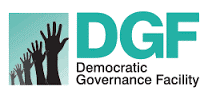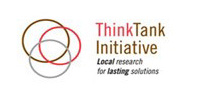
Issue 9 | April 18, 2020
Impact of Covid-19 on Africa – A Call for Immediate and Responsive Action
By Enock Nyorekwa Twinoburyo (PhD) | Guest @ACODE_Uganda
 It is no longer guess work, on the impact of the COVID19. The global recession is upon us and could get worse owing to the length of spread and containment of it. UN estimates USD 2 trillion shortfall in global income in 2020. The longer, the more protracted, the more likely an economic depression may manifest as households and businesses are expected to run into bankruptcies. At our hands, we have no vaccine in near time (1-2 years) and the confirmed cases growing still. As of 2nd April, the number of confirmed cases is expected to reach of 1 million by end of day, from just 182,000 confirmed cases on the 16th March. The deaths expected to reach nearly 40,000 from as low as 7200 over the corresponding period. Despite, the rapid response mechanisms seen all over, uncertainty on length of time it will take to yield successful control of spread predominates.
It is no longer guess work, on the impact of the COVID19. The global recession is upon us and could get worse owing to the length of spread and containment of it. UN estimates USD 2 trillion shortfall in global income in 2020. The longer, the more protracted, the more likely an economic depression may manifest as households and businesses are expected to run into bankruptcies. At our hands, we have no vaccine in near time (1-2 years) and the confirmed cases growing still. As of 2nd April, the number of confirmed cases is expected to reach of 1 million by end of day, from just 182,000 confirmed cases on the 16th March. The deaths expected to reach nearly 40,000 from as low as 7200 over the corresponding period. Despite, the rapid response mechanisms seen all over, uncertainty on length of time it will take to yield successful control of spread predominates.
The health pandemic is indeed an economic plague. Unlike previous ones affecting one sector e.g. financial sector which had impact on consumer and firm behavior, COVID19 has shut down nearly all sectors and all regions. Unlike the past crisis where developing and emerging world were shielded in short term, the speed of transmission is accelerated this time round. The current lock down measures (in part and wholly across countries and borders) are a supply shock unlike previous crisis that were demand shocks. Even those with money cannot demand what they need. But at the other end, also lies a large share of population and firms risking bankruptcies even in developed economies as already seen in sharp decline in Purchasing Managers Index, Restaurant Indices, tourism sector and travel stagnation as well as other economic indicators. The current downsides of the pandemic will supersede the disease itself and have lasting effects, owing to lag effects on the associated current distortions to the economic flows, demand and supply factors.
As afore mentioned, no continent or country is spared from the economic or health effects of the pandemic. Africa as a continent has seen least confirmed cases of the Virus still less than 6% of global confirmed cases but number has been growing and virus in now nearly 50 of 54 African nations. The pace, is however, still lower than that of Europe in the first 50 days of the virus. On the economic front, external distortions are expected, and main link is with China (the OPEC of industrial intermediate goods), where sizeable production or supply disruptions have also already happened. For the first time, since 1976, China’s growth for the first quarter of 2020 is expected to be negative, largely also reflecting double digit declines (year on year) in January and February in industrial and service production, exports, retail sales, investment in fixed assets1. The recent UN Economic Commission for Africa2 estimated, that 1% reduction in growth in China, translates into 0.3% reduction in Africa’s growth. The direct correlation and impact is corroborated by other empirical studies. The impact, however, is expected to be more in crisis times.
The pandemic brings a new short term dimension and has heightened fiscal vulnerabilities attributed to external factors including falling commodity prices that weakened fiscal revenues and growth. Currently, nearly 20 African countries are at high risk of debt stress or debt stressed. Even, countries like Uganda that are at low debt stress, their levels of debt service have risen to about 20% of domestic revenue compared to contintinent’s 12% of domestic revenue – indicative of the potential liquidity challenges. In light of rising external debt, the recent struggle of local currencies will exacerbate the debt pressure, as already , African external debt payments doubled from an average of 6% of government revenue in 2015 to 12% in 20173. Take Uganda for instance, a 10% depreciation of the Uganda shilling against the USD averagely translates into an additional revenue requirement in low currency in the range of 2-3% of GDP to repay is over USD 8 billion external debt. The fiscal strain is also reflected in the African Minister’s call for the economic stimulus of USD 100 billion and call for second wave of Africa debt relief. Also some countries (South Africa and Botswana) have already faced downgrades in their sovereign credit ratings. Zambia has already appealed for a restructuring of its external debt, amounting to USD11.2bn. This is not good news for the Continent, as one of the clear measures of economic stability and health is fiscal policy ammunition now and fast.
The problem is even bigger, owing the state of limited social protection in Africa (only 18% are receiving at least one cash social protection benefit social protection benefit), limited health insurance and majority of Africans remain just slightly above poverty line and are on shock away from falling back into poverty. The majority of the labour force are in vulnerable employment and working poor are still many. Yet unemployment protections are also limited and grossly inadequate. Uganda is not any different, has over 6 million subsistence employment and also an additional 6 million in Vulnerable employment (as part of the 10 million Labor force). The overall median wage from Uganda National Household Survey shows a median age of only UGX 168,000 and the respective rural median wage is only 120,000 just about the threshold of poverty. Even, in the formal employment: The Uganda Revenue Authority’s PAYE (Pay As You Earn) register of 1.33 million in 2017/18 accounts approximately for only 10% of the labour force. Average formal household nominal cash incomes at equivalent of USD 115 in 2017 had declined by 8.2% in Uganda shillings since 2013. The rural average wage was about USD 80 compared to the Kampala city average that was 3 times more.
So, needless to emphasize the need for immediate short term emergency social protection fund aimed at providing a buffer to vulnerable populations. This is consistent with global wave of response - as already seen in the number of government protection measures being adopted to support employers and workers. The next question is modality of delivery – in which case, cash payments and transfers are more effective model, especially when channeled through digital platforms. The food distribution model, is flawed and is not necessary modest to multi dimension basic needs. Uganda, already has a high share of catastrophic expenditure with medical expenses accounting for over 20% of household income. As evidence suggests, increased medical expenses enhance that rate at which people fall into poverty. As a wakeup call, there is need to build comprehensive and sustainable social protection measures – building citizenry resilience buffers to withstand any future shocks.
Prioritising the health of people is important which indeed makes the lockdown a right measure given the preparedness of the health sector. Even those with developed health systems are struggling. Ring fenced health sector interventions require clear but also adequately planned for budgets. We ought to also avoid budgets for sake of budgets, they must be aligned to clear interventions, outputs and verifiable undertakings. Also fiscally, there is need to target support to key critical sectors in private sector – which is deeply affected. This should be meticulously and prudently evaluated to avoid the prospects of elite capture and moral hazard. The funding, incentives and deferred tax obligations (such as the proposed raising of the PAYE threshold to relieve low income earners) should be conditional to protection of jobs as already seen in developed economies
Another question is how to entrench fiscal fire power in the epoch of dwindling revenue streams and heightened fiscal burden. The yields on government debt are already expected to rise, as is the peril of increasing cost of debt. As is the case, average weighted debt interest rate has been higher than growth for a while and will worsen. The simple answer is a fiscal response within means. This calls for allocation efficiency within the statutory ceilings and also reallocations of budget to a stabilization tool, with a decent trade off as development agenda. Protect and guarantee essential sectors such as health care, food production and distribution, essential infrastructure, and utilities4. The international arena, offers emergency support and a number of them have been announced – to a tune of USD 4.6 trillion since beginning of 20205. Effective coordination and dialogue is need for expeditious realization of this support. Government should desist, from printing money as well as unabated domestic borrowing. As governments are not only saving themselves, but people and businesses, there is need for negotiation on debt maturities, on restructuring of debt, particularly related to freezing interest payments, where feasible negotiate for debt relief.
The last wave of policy response, is usually the use of monetary policy as the line of defense for the economy. Globally and regionally in Africa, there is already a clear direction of easing monetary policy. Economies like Uganda too could cautiously review this modality, given that secondary round effects of inflation are still contained. However, owing to fact that both supply and aggregate demand are low, this measure may not be effective. As noticed, over last epochs of economic shocks in 2011/12 and 2015, the lending even when Central Bank rate was reduced remained sluggish. This is expected this time round. The Central Bank also should engage with key stakeholders to ensure liquidity challenges, including extension of loan maturities for critical household and businesses and where necessary lender of last resort to embattled financial institutions are planned for. The modest interjections in the foreign exchange market also remain important. Both fiscal and monetary policy measures should be coordinated.
In conclusion, the response mechanisms and the associated potency across the world are varied. The developing world in particular Africa has limited domestic policy and financial maneuver. The re-opening of the borders will indeed take a long time and restoration of travel order will not be business as usual. We may have to own COVID-19 vaccination cards but Vaccine remains elusive. The consensus is that this pandemic requires collective response and no country has a standalone capacity to wither effects. The low income countries like Uganda will thrive sizably also on external support.
Footnote References
-----------------------
1 https://www.weforum.org/agenda/2020/03/covid19-economy-china-health-coronavirus-economics-global/
2 https://www.uneca.org/sites/default/files/uploaded-documents/ERA/ERA2017/era-2017_en_fin_jun2017.pdf
3 https://www.reuters.com/article/us-health-coronavirus-africa-debt-analys/africas-web-of-creditors-complicates-coronavirus-debt-relief-idUSKBN21E2G3
4 https://blogs.imf.org/2020/04/01/economic-policies-for-the-covid-19-war/?utm_medium=email&utm_source=govdelivery
5 www.devex.com/news/interactive-who-s-funding-the-covid-19-response-and-what-are-the-priorities-96833
|
|





+256 312 812 150 | Leave a comment | Center for Budget and Economic Governance
Subscribe To Our News Letter | Edit Subscription | Unsubscribe